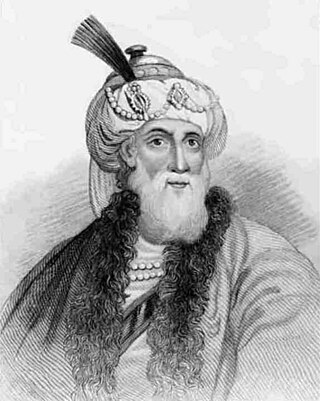
Flavius Josephus was a Roman–Jewish historian and military leader. Best known for writing The Jewish War, he was born in Jerusalem—then part of the Roman province of Judea—to a father of priestly descent and a mother who claimed royal ancestry.
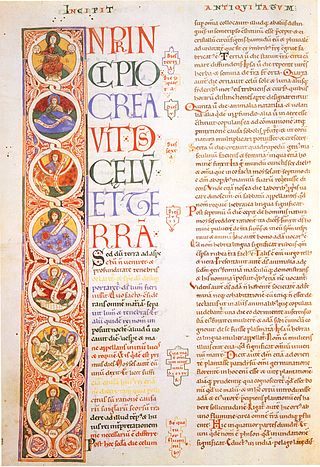
Antiquities of the Jews is a 20-volume historiographical work, written in Greek, by historian Josephus in the 13th year of the reign of Roman emperor Domitian, which was 94 CE. The book contains an account of the history of the Jewish people for Josephus' gentile patrons. In the first ten volumes, Josephus follows the events of the Hebrew Bible beginning with the creation of Adam and Eve.

Vologases III was king of the Parthian Empire from 110 to 147. He was the son and successor of Pacorus II.

Characene, also known as Mesene (Μεσσήνη) or Meshan, was a kingdom founded by the Iranian Hyspaosines located at the head of the Persian Gulf mostly within modern day Iraq. Its capital, Charax Spasinou, was an important port for trade between Mesopotamia and India, and also provided port facilities for the city of Susa further up the Karun River. The kingdom was frequently a vassal of the Parthian Empire. Characene was mainly populated by Arabs, who spoke Aramaic as their cultural language. All rulers of the principality had Iranian names. Members of the Arsacid dynasty also ruled the state.

Charax Spasinu, also called Charax Spasinou, Charax Pasinu, Spasinu Charax, Alexandria or Antiochia in Susiana, was an ancient port at the head of the Persian Gulf in modern day Iraq, and the capital of the ancient kingdom of Characene.
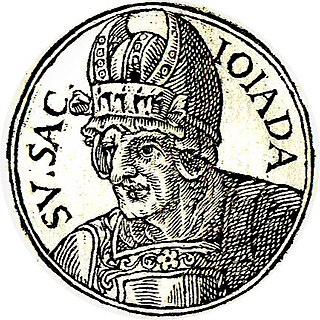
Jehoiada in the Hebrew Bible, was a prominent priest in the kingdom of Judah during the reigns of Ahaziah, Athaliah, and Joash. Jehoiada became the brother-in-law of King Ahaziah as a result of his marriage with princess Jehosheba. Both Jehosheba and Ahaziah were children of King Jehoram of Judah. Ahaziah died a year after assuming the throne, which was then usurped by his mother Athaliah, who ordered the execution of all members of the royal family.
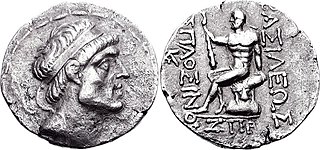
Hyspaosines was an Iranian prince, and the founder of Characene, a kingdom situated in southern Mesopotamia. He was originally a Seleucid satrap installed by king Antiochus IV Epiphanes, but declared independence in 141 BC after the collapse and subsequent transfer of Seleucid authority in Iran and Babylonia to the Parthians. Hyspaosines briefly occupied the Parthian city of Babylon in 127 BC, where he is recorded in records as king (šarru). In 124 BC, however, he was forced to acknowledge Parthian suzerainty. He died in the same year, and was succeeded by his juvenile son Apodakos.

Tiraios I was a king from 95/94 BC to 90/89 BC of Characene, a vassal state of the Parthians.

Artabazos I of Characene was a king of Characene, a vassal state of the Parthians, His short reign lasted only from 49/48-48/47 BC.
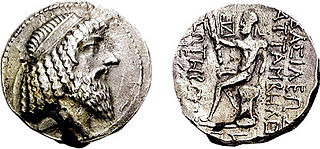
Attambelos I was a king of Characene, a Parthian vassal state and important trading port and emporium on the Persian Gulf. His rule was from 47/46 to 25/24BC.

Attambelos II was a king of Characene, a Parthian vassal state and important trading port on the Persian Gulf. His rule was from 17/16 to 9/8BC.

Attambelos VII was a king of Characene, a vassal state of the Parthians and important trading port. His short reign lasted from 113/4 to 116/7 AD and was spent mostly contending with the Roman invasion under Trajan.
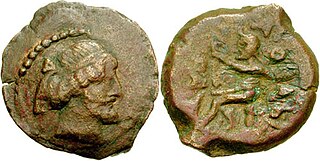
Orabazes II was a king of Characene a kingdom located at the head of the Persian Gulf. His reign was from 150/51 to 165. He was most likely a relative of the Parthian king Vologases IV.

Abinergaios II was a ruler of Characene, an ancient kingdom located at the head of the Persian Gulf in modern Iraq. He reigned around 170 AD and like most Characene rulers he is known only from his coins, on which the spelling of his name varies.
Laodice was a Queen of an unknown Kingdom in Asia. She lived at the time of the Seleucid king of Syria Antiochus X Eusebes who reigned 95 BC-92 or 88 BC.

Attambelos III of Characene was a king of Characene who ruled from approximately 37/38 to 44/45AD. His rule is known only by the coins he minted. The presence of these coins as far afield as Oman and southern Arabia indicates that his rule saw a time of extensive trade.

Attambelos IV of Characene was a first century ruler of the state of Characene, centered on the northern end of the Persian Gulf. His capital was probably Charax.

Attambelos V of Characene was a ruler of the state of Characene who ruled from 64/65–73/74 but who is known only from the coins he minted.

Theonesios III of Characene was a king of Characene who ruled from approximately 52AD. His rule is known only by the coins he minted.

Theonesios II of Characene was a 1st century king of the kingdom of Characene located at the mouth of the Tigris-Euphrates rivers during antiquity. He ruled for only a few months in 46/47AD. His rule is known only by the coins he minted.














